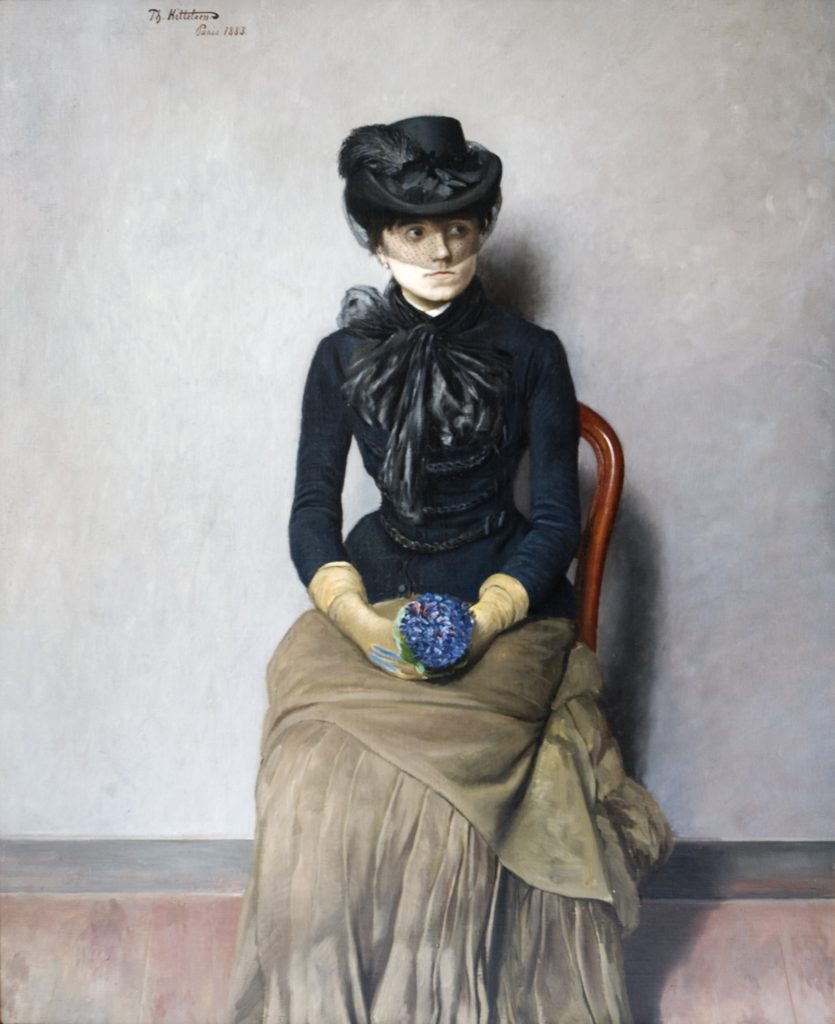In the Waiting Room

As an artist of fantasy and fairytales, Theodor Kittelsen (1857–1914) is unsurpassed in Norwegian art history. He was known in particular as a brilliant draughtsman and pastel artist and his beloved illustrations of Asbjørnsen and Moe’s folktales hold a unique position in his artistic production. Kittelsen often combined original and burlesque representations of mythical characters from legends and fairytales with depictions of evocative landscapes. He was an exceptionally complex artist whose representations range from the outrageously fantastic and grotesque to the directly crude, and on the other hand, from the sentimental and saccharine to the distinctly emotive and subtly poetic.
Many of Kittelsen’s pictures have become icons in the national ‘cultural heritage’ of Norway. You won’t find a Norwegian who isn’t familiar with the menacing yet spellbinding The Water Sprite or The White Horse with its ‘Munch’ column of moonlight, the infinite quiet in It Snows and Snows and Bullfinch on a Twig with Hoarfrost, not to mention the bewitching Soria Moria.
In the Waiting Room, on the other hand, represents a totally different side of Kittelsen’s work. Although this picture can be considered one of Kittelsen’s few convincing oil paintings, it is not so difficult to understand the judgement passed by art history that he never became conversant in the oil medium. The motif is presented in a sober and prosaic manner and in keeping with the hardboiled naturalism that in many ways characterised the art of the 1870s and 80s. This style of painting was exceptionally unsuited to Kittelsen’s fanciful idiom, yet he tried his best to live up to the ideals of the times. His painting Strike (1879), for instance, is considered an important work in Norwegian art, not because of its painterly qualities, but as the first example of tendentious painting.
In the Waiting Room was painted during a sojourn in Paris in the winter of 1883, but there is little evidence that the artist was able to adapt to contemporary French art. There is something heavy-handed in the presentation: the model sits stiffly erect in a chair that is positioned up against the wall. She is well-dressed, including hat and gloves, and her hands are carefully folded on her lap holding a little bouquet of flowers. With the exception of her gaze, which for some reason is turned to the side (is she reluctant to meet the gaze of the viewer?), the picture is characterised by a severe frontal perspective. As motif, the picture can been seen in connection with the sophisticated portrait painting of the times, but more than anything it has clear references to the documentary conventions of established photography.
In the literature on Kittelsen this painting has been given the more neutral title Study, but if we trace it back to the large Kittelsen exhibition at the Kristiania Art Association in 1911, when the artist was still living, it was entitled In the Waiting Room. We have no idea what type of “waiting room” it was – was she waiting for a train … for a friend … or perhaps the police medical practitioner? Based on the picture’s title and the artist’s expressed social commitment, the young woman is perhaps a cocotte (they were often used as models in Paris at that time), and the painting can conceivably be perceived as a commentary on the social conditions of prostitutes. In that case In the Waiting Room pre-dates Christian Krohg’s socially committed Albertine paintings that were executed somewhat later in the 1880s.
OWG